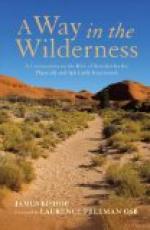It was good to live there among them, with the mountain at our backs and the lake at our feet, and peace breathing in every breeze or brooding silently over the place at twilight. Rain or shine, day or night, these white-throated sparrows are the sunniest, cheeriest folk to be found anywhere in the woods. I grew to understand and love the Milicete name, Killooleet, Little Sweet-Voice, for its expressiveness. “Hour-Bird” the Micmacs call him; for they say he sings every hour, and so tells the time, “all same’s one white man’s watch.” And indeed there is rarely an hour, day or night, in the northern woods when you cannot hear Killooleet singing. Other birds grow silent after they have won their mates, or they grow fat and lazy as summer advances, or absorbed in the care of their young, and have no time nor thought for singing. But not so Killooleet. He is kinder to his mate after he has won her, and never lets selfishness or the summer steal away his music; for he knows that the woods are brighter for his singing.
Sometimes, at night, I would, take a brand from the fire, and follow a deer path that wound about the mountain, or steal away into a dark thicket and strike a parlor match. As the flame shot up, lighting its little circle of waiting leaves, there would be a stir beside me in the underbrush, or overhead in the fir; then tinkling out of the darkness, like a brook under the snow, would come the low clear strain of melody that always set my heart a-dancing,—I’m here, sweet Killooleet-lillooleet-lillooleet, the good-night song of my gentle neighbor. Then along the path a little way, and another match, and another song to make one better and his rest sweeter.
By day I used to listen to them, hours long at a stretch, practicing to perfect their song. These were the younger birds, of course; and for a long time they puzzled me. Those who know Killooleet’s song will remember that it begins with three clear sweet notes; but very few have observed the break between the second and third of these. I noticed, first of all, that certain birds would start the song twenty times in succession, yet never get beyond the second note. And when I crept up, to find out about it, I would find them sitting disconsolately, deep in shadow, instead of out in the light where they love to sing, with a pitiful little droop of wings and tail, and the air of failure and dejection in every movement. Then again these same singers would touch the third note, and always in such cases they would prolong the last trill, the lillooleet-lillooleet (the Peabody-Peabody, as some think of it), to an indefinite length, instead of stopping at the second or third repetition, which is the rule with good singers. Then they would come out of the shadow, and stir about briskly, and sing again with an air of triumph.




